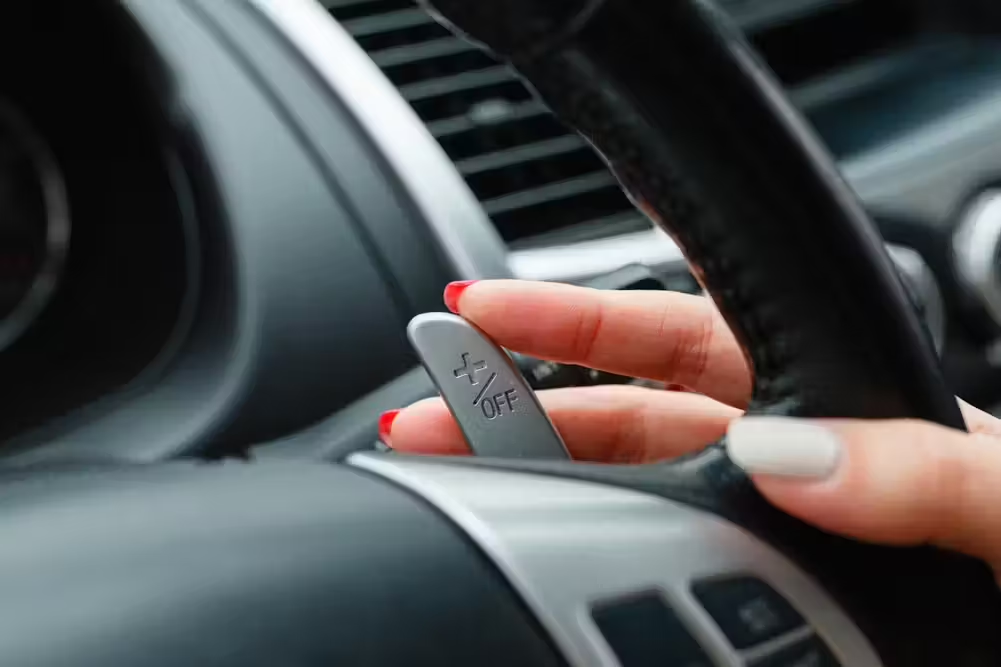Paddle shifters have become a popular feature in modern vehicles, offering drivers a unique way to engage with their car’s performance. Whether you’re driving a sporty coupe or a luxury sedan, knowing how to use paddle shifters can enhance your driving experience. In this guide, we’ll explore what paddle shifters are, how they work, and tips for using them effectively.
What Are Paddle Shifters?
Paddle shifters are small levers located behind the steering wheel that allow drivers to manually control gear shifts in an automatic transmission. These shifters provide a sportier driving experience by giving you the ability to change gears without taking your hands off the wheel. Typically, one paddle is used to upshift (increase gear) and the other to downshift (decrease gear).
How Do Paddle Shifters Work?
Paddle shifters operate in conjunction with an automatic transmission, allowing for a blend of manual control and the convenience of an automatic system. Here’s how they work:
- Upshifting: Pulling the right paddle shifts the transmission to a higher gear, allowing the engine to operate at a lower RPM, which can enhance fuel efficiency.
- Downshifting: Pulling the left paddle shifts the transmission to a lower gear, increasing engine power and responsiveness, which is beneficial for acceleration or driving on inclines.
Most systems allow for a certain degree of automatic shifting, meaning if you reach the engine’s redline without shifting, the transmission will shift for you to prevent damage.
Benefits of Using Paddle Shifters
1. Enhanced Control
Paddle shifters give you more control over your vehicle’s performance, allowing for quick gear changes that can enhance acceleration and handling. This is particularly beneficial in sporty driving situations, such as navigating winding roads or during spirited driving.
2. Improved Driving Experience
Using paddle shifters can make driving more engaging and enjoyable. The ability to select gears manually adds a level of interaction that is often missing in standard automatic driving.
3. Better Engine Braking
When descending hills or slowing down, downshifting with paddle shifters allows for better engine braking. This can help maintain control and reduce wear on the brake system.
4. Tailored Performance
Paddle shifters enable you to tailor your vehicle’s performance to suit your driving style. Whether you prefer a smooth, relaxed ride or an aggressive, sporty experience, manual shifting allows for personalized control.
How to Use Paddle Shifters Effectively
1. Familiarize Yourself with Your Vehicle
Before using paddle shifters, it’s important to familiarize yourself with your specific vehicle’s system. Consult the owner’s manual to understand how the paddle shifters operate and any specific features they may have.
2. Start in Automatic Mode
Most vehicles with paddle shifters start in automatic mode. Drive in this mode for a while to get a feel for how the transmission behaves before switching to manual mode. This will help you understand the engine’s RPM range and when to shift.
3. Use the Right RPM Range
When shifting gears, pay attention to the engine’s RPM. Generally, it’s best to upshift before reaching the redline to maintain engine health. Conversely, downshift when the RPM drops too low to avoid stalling. A good rule of thumb is to upshift around 2,500 to 3,000 RPM for everyday driving and closer to 6,000 RPM for sporty driving.
4. Anticipate Shifting Needs
Develop the ability to anticipate when to shift based on your driving conditions. For example, if you’re approaching a hill, downshift early to maintain power. Similarly, before making a turn, downshifting can help maintain speed and control.
5. Practice Smooth Transitions
Practice making smooth transitions between gears. Jerky shifts can disrupt vehicle balance and comfort. Focus on gentle, gradual movements when pulling the paddles to enhance your driving experience.
6. Combine with Other Driving Techniques
Paddle shifters work best when combined with other driving techniques, such as heel-toe downshifting for sports driving or engine braking when going downhill. Learning these techniques can further enhance your control and driving pleasure.
Common Mistakes to Avoid
1. Over-Reliance on Manual Shifting
While paddle shifters offer great control, it’s essential not to over-rely on them, especially in everyday driving. In many situations, the automatic mode is designed to provide optimal efficiency and comfort.
2. Ignoring RPM Indicators
Ignoring the engine’s RPM can lead to improper shifting, which may cause damage or reduce performance. Always be aware of your engine’s behavior and shift accordingly.
3. Shifting Too Late or Too Early
Shifting too late can lead to excessive engine strain, while shifting too early can cause a loss of power. Practice finding the right balance for your driving style and conditions.
Conclusion
Paddle shifters offer an exciting way to engage with your vehicle’s performance, providing drivers with the ability to control gear changes manually. Understanding how to use paddle shifters effectively can enhance your driving experience, improve vehicle control, and make every drive more enjoyable.
By familiarizing yourself with your vehicle’s system, practicing smooth transitions, and anticipating your shifting needs, you can master the art of using paddle shifters. Whether you’re navigating city streets or enjoying a winding country road, paddle shifters allow for a personalized and engaging driving experience. So buckle up, get behind the wheel, and enjoy the thrill of taking control of your ride!

